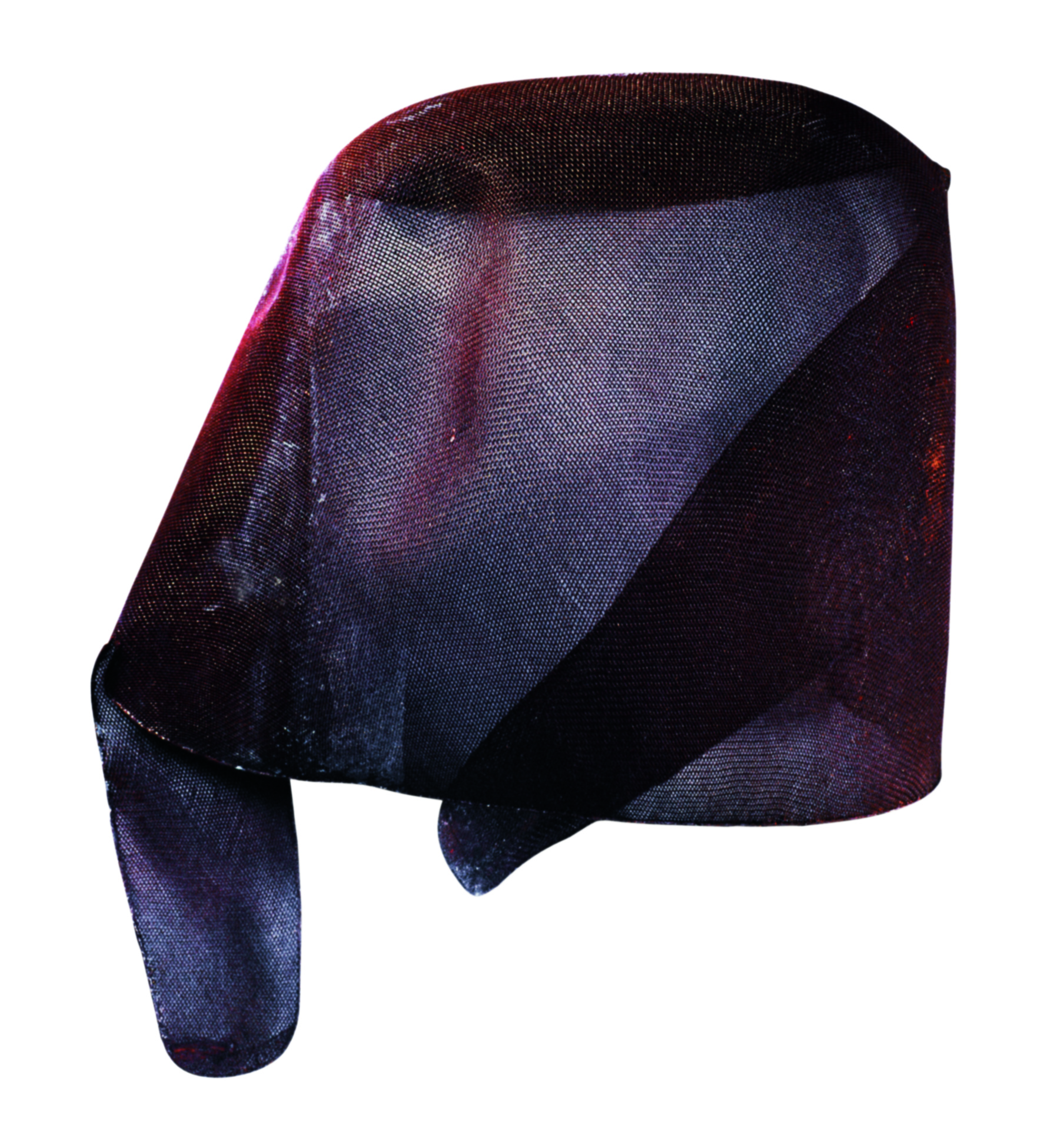Dimensions:Length: 24.4cm; Width: 26cm; Length of the Flaps: 8cm
Origin: Excavated from Han Tomb No.3, Mawangdui, Changsha City, Hunan Province, 1973
Lacquered gauze cap is commonly called black gauze cap. When unearthed, it was stored in a double-layer painted oblong lacquer box and should be the official cap worn by the occupant of the tomb in his lifetime. The occupant of Tomb 3 is the son of Li Cang, the first Marquis of Dai, who was a military general in his lifetime. Lacquer-Painted Gauze Cap is very much like the military official cap worn by military officers at that time and has a far-reaching influence on later generations. One good example is the black gauze cap worn by all civilian and military officials of the Ming Dynasty. It can thus be said that this artifact is the earliest real object of black gauze cap found in China so far.
There are possibly two kinds of weaving technique involved in the making of such Lacquer-Painted Gauze Cap. One kind calls for the weaver to separate the left slanting warp and right slanting warp into two groups before it is woven alternatively. The other kind is using a special loom to weave out gauze. When the gauze is finished, it is put to cover a model and then pressed to form the dustbin-shaped contour of a cap. After a fixative line is applied to the cap frame, lacquer is painted over and over again on the warps and wefts. Because the finished lozenge square pores are evenly distributed as in tabby thin silk, it is called xi (silk used to tie up human hair). One similar lacquer-painted gauze cap was unearthed in Xinmang Tomb 62 at Mozuizi in Wuwei, Gansu Province. It was worn on the head of a male corpse. The cap is covered in thin bamboo ribs, supported by a bamboo framework on the top and lined with ze (a kind of head-covering). It is a complete real material example of cap worn by military officers.



